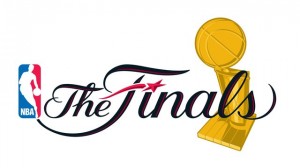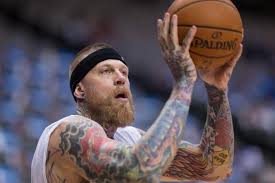 As the NBA Finals move on to Game 2, we are back with another Three-Man Weave.
As the NBA Finals move on to Game 2, we are back with another Three-Man Weave.
This time, we take a look at the cramp quotient for LeBron James and which adjustments each team needs to make.
1. Now that the air conditioning at the AT&T Center is supposedly fixed, are LeBron James’ cramping issues a thing of the past?
CHRIS SHERIDAN, EDITOR IN CHIEF: I am not quite the physical specimen that James is, but I have experienced leg cramping from dehydration. And I know that those knots in your calves do not just disappear once you are rehydrated. They can linger for several days. So it is on the Heat’s medical staff to get James as close to 100 percent as possible, but there is no telling whether the cramping will return, or if the muscles deep inside his legs will have had enough time to recover. We won’t have our answer until the fourth quarter, I reckon.
CHRIS BERNUCCA, MANAGING EDITOR: Probably. There is always a chance of recurrence with cramps, but you would think that James’ issues in Game 1 arose from a number of factors – his lack of body fat, his projected 40-plus minutes and the oppressive heat in the building. Remove the heat factor and things are pretty much back to normal. It would be nice if Dwyane Wade and Chris Bosh act like All-Stars, take charge for a minute or two and buy James some extra rest.
MICHAEL SCOTTO, COLUMNIST: LeBron James will be filled with Powerade, Gatorade, water and anything else that will keep him on the floor. Miami folded like a bad poker hand when he went down. I can see coach Erik Spoelstra resting him an extra minute for each of the first three quarters of the game to preserve him down the stretch for the fourth quarter. If James is settling for jump shots, it’s a sign he’s feeling tentative on the floor.
2. What is the most important adjustment the Heat have to make for Game 2?
 SHERIDAN: The Heat saw what a difference maker Serge Ibaka was for the Thunder when he returned for Game 3 of the Western Conference finals, and it would behoove them to put Chris “Birdman” Andersen into the starting lineup and double his minutes to 38 per game. He can rebound, block shots, alter shots and is waaaay more athletic than Spoelstra’s other candidate, Udonis Haslem. When a team allows an opposing player to shoot 90 (!!) percent as Tim Duncan did, it is a problem that must be addressed immediately and forcefully.
SHERIDAN: The Heat saw what a difference maker Serge Ibaka was for the Thunder when he returned for Game 3 of the Western Conference finals, and it would behoove them to put Chris “Birdman” Andersen into the starting lineup and double his minutes to 38 per game. He can rebound, block shots, alter shots and is waaaay more athletic than Spoelstra’s other candidate, Udonis Haslem. When a team allows an opposing player to shoot 90 (!!) percent as Tim Duncan did, it is a problem that must be addressed immediately and forcefully.
BERNUCCA: Miami has to do something to slow down San Antonio’s bigs, who quietly dominated Game 1. While I agree that Chris Andersen has to play more, I also believe that Udonis Haslem has to play. He is Miami’s best post defender and rebounder, makes the short corner jumper and has been through the postseason wars. He was effective in limited minutes vs. Indiana, and Erik Spoelstra has to find out as soon as possible if he can duplicate that here.
SCOTTO: Miami needs to make two adjustments. First, run San Antonio’s shooters off the 3-point line. The Spurs lit it up from beyond the arc in Game 1 (13-of-25). Another way to slow down San Antonio on the perimeter is for Miami to corral more rebounds and prevent second-chance opportunities. I wouldn’t be surprised to see more minutes for rugged defenders Chris Andersen and even Udonis Haslem to close the rebounding gap. Rashard Lewis didn’t grab a single rebound in Game 1, which is unacceptable for any team’s starting power forward.
3. What adjustment for Game 2 do the Spurs have to make, if any?
SHERIDAN: Protect the ball. Committing 23 turnovers is a formula for failure, and the Spurs were fortunate to get away with that many miscues in Game 1. But that won’t happen twice. The Heat were collapsing like crazy on Tony Parker, and he might need to start swinging the ball a little earlier rather than getting stuck in traffic in the lane. The passing of Manu Ginobili and Boris Diaw was magnificent, and the rest of the Spurs should be required to watch tape of those passes and emulate them. Miami is a terrific bounce back team, so the Spurs need to limit the number of transition opportunities they give the Heat. That begins with limiting TOs.
BERNUCCA: Stranger things have happened, but I don’t see the Spurs having consecutive 20-turnover  games on their home floor. I also don’t see Tiago Splitter, Patty Mills and Marco Belinelli (combined 30 points) contributing at the level they did, either. Starters Danny Green and Kawhi Leonard combined for 22 points; 17 of them came after LeBron James tapped out with cramps. San Antonio needs to get either Green or Leonard going much earlier to somewhat occupy James.
games on their home floor. I also don’t see Tiago Splitter, Patty Mills and Marco Belinelli (combined 30 points) contributing at the level they did, either. Starters Danny Green and Kawhi Leonard combined for 22 points; 17 of them came after LeBron James tapped out with cramps. San Antonio needs to get either Green or Leonard going much earlier to somewhat occupy James.
SCOTTO: The biggest adjustment for the Spurs is ball security. Coach Gregg Popovich was not pleased during his postgame remarks with the team’s 23 turnovers and sloppy play. Too many times, the Spurs made lackluster crosscourt passes and tried to thread the needle on pick-and-roll plays. Calling post-up plays for Tim Duncan and Boris Diaw on the block will be one way to limit the careless ball movement from Game 1. Overall, however, I don’t see ball security as a recurring issue in Game 2.
Hi, all is going sound here and ofcourse every one is sharing facts,
that’s in fact good, keep up writing.
Visit my weblog: natural muscle builder (http://loisuqgvkiixfkyg.pen.io)